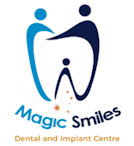
Suppose you’ve just crunched down on some hard candy or ice, then you notice a hard particle that doesn’t dissolve. Next, you get a sinking feeling as you realize what it is: it’s a tiny fragment of your tooth.
Restorative dentist Dr. Arpit Pathak offers restorative dentistry treatments to help you reclaim confidence in your smile and wellness. Have you recently chipped your tooth? If so, first book an appointment at our Woolgoolga or Coffs Harbour, NSW location as soon as possible. Secondly, read and follow these instructions:
How to Care for a Chipped Tooth
If you’ve accidentally chipped or broken a tooth, don’t panic. After scheduling a visit with your restorative dentist, take these precautions until you can meet with an oral health professional:
- Manage Pain: If you’re experiencing dental pain, take an over-the-counter pain reliever and use a saltwater rinse.
- Adjust Your Mealtime Habits: When eating, avoid biting down on the fractured tooth and try to eat soft foods.
- Protect Your Mouth: If your fractured tooth has a jagged or sharp edge, cover the uneven surface with a piece of paraffin wax. This can temporarily protect your tongue, cheeks, and other soft tissues.
How a Restorative Dentist Can Repair a Chipped Tooth
Treatment for a chipped or broken tooth is highly dependent on how seriously it is damaged:
Dental Bonding
Suppose you’ve chipped off a small amount of dental enamel. If this is the case, your restorative dentist can fix the damage with dental bonding in a single visit. Some patients prefer dental bonding because it’s affordable, quick, and straightforward. Generally, patients do not require anesthesia because they feel little to no discomfort during this procedure.
Porcelain Veneers
Although porcelain veneers are often associated with cosmetic dentistry, they can also be a long-lasting way to mend chipped teeth. Generally, a restorative dentist can attach porcelain veneers in two visits.
Compared to other dental procedures (such as dental crowns and dental implants), porcelain veneers are conservative. Your restorative dentist will save as much of your natural tooth structure as possible before attaching the dental veneer.
Dental Crown
For larger chips or damaged molars, we suggest dental crowns. Crowns are tooth-shaped caps that cover the tooth root. Typically, your restorative dentist can place a dental crown can in as little as two visits.
If you have extensive structural damage, a custom-made crown can protect your tooth while relieving sensitivity. Dental crowns can last for years, depending on the type of crown, your restorative dentist’s skill-set, and how you treat your teeth.
Dental Implant
Seeing your restorative dentist as soon as possible could help protect your tooth from further damage and infection–potentially causing you to lose your tooth if you wait too long.
Suppose this is the case, then your best restorative option in this worst-case scenario (tooth loss) is a dental implant. A dental implant-supported restoration is a highly successful dental device resembling a natural tooth in aesthetics, function, and feel.
See a Restorative Dentist ASAP!
Even though dental enamel is the hardest, most mineralized tissue in the human body, it has its limits. Thankfully, Dr. Pathak and his team of restorative dentists can help regain your smile if you damage your teeth.
Don’t wait for a second longer! Meet with a restorative dentist by contacting one of our New South Wales dental offices:
- Woolgoolga: (02) 6654-0650
- Coffs Harbour: (02) 6652-3242


